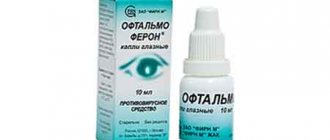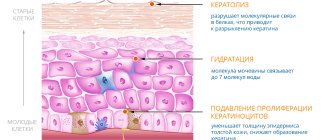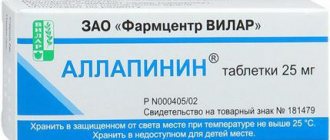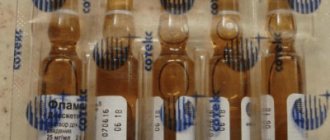In medical practice, there are situations in which the use of drugs leads to an overdose or a negative reaction from various organs and systems. Opioid drugs especially often cause such complications. To speed up their removal from the body, doctors use special medications. The drug "Naloxone" is a remedy that helps correct the situation in case of an overdose of opioid analgesics. What is it and what is the mechanism of its influence? Let's try to understand these issues.
Description of the medicine, composition and forms
The instructions for use refer to the drug "Naloxone" as an opioid receptor antagonist. Its active ingredient is naloxone hydrochloride. The dosage forms that can be found on the pharmaceutical market are not so diverse, these are injection solution and tablets. The latter are very rarely used in medical practice. The liquid form for intravenous or intramuscular administration, on the contrary, is in great demand. The solution, in addition to the active substance, includes a set of standard auxiliary components: sodium chloride, purified water, organic acids and salts.
The medicine “Naloxone” is produced in clear glass ampoules of 1 ml each. The concentration of the active substance in one dose is 0.4 mg.
The drug is packaged in contour packages made of varnished transparent plastic with or without a plug made of aluminum foil. Each package contains 5 ampoules.
1 or 2 contour packages are placed in a cardboard box along with instructions for use of the drug and an ampoule scarifier. If the ampoules are equipped with a special ring or breaking point, knives for opening them are not placed in the box.
The mechanism of action of the drug "Naloxone"
As mentioned above, the instructions for use classify the drug Naloxone as an opioid receptor antagonist. This means that this drug is able to block these receptors, thereby eliminating the central and peripheral effects of compounds from the group of opioids. In addition, when administered, the drug can cause withdrawal symptoms in patients with drug addiction.
When using the Naloxone solution, the mechanism of action of which is described above, the effect occurs within a short time. When administered intravenously, the medicine begins to act after 1-2 minutes, when administered intramuscularly after 5 minutes. The duration of the therapeutic effect also depends on the method of administration of the solution. If the solution was injected into the muscle, the medicine lasts about 45 minutes, and with intravenous infusion - at least 4 hours.
Specialists most often use Naloxone solution to treat patients. Tablets, in contrast, have a weak and short-lived effect.
The active substance of the drug breaks down into metabolites in the liver. Its half-life is short, only 30-80 minutes. 70% of the administered dose of Naloxone is excreted by the kidneys within 3 days.
The main advantage of the drug Naloxone is the impossibility of developing dependence on it.
Pharmacological properties
Pharmacodynamics. Naloxone is a specific opioid receptor antagonist. Competitively binds to the main types of opioid receptors and prevents or eliminates the central (including respiratory depression) and peripheral effects of both endogenous opioid peptides and exogenous opioids - narcotic analgesics and their surrogates. It also affects the dopaminergic and GABAergic systems of the brain. Does not cause tolerance or drug dependence. In people with drug addiction, it provokes the development of withdrawal syndrome.
With intravenous administration, the effect develops within the first 2 minutes, with intramuscular and subcutaneous administration - after 2-5 minutes and reaches a maximum after 5-15 minutes. The duration of action ranges from 20-45 minutes after intravenous administration and 2.5-3 hours after intramuscular and subcutaneous administration. Of practical importance are the ability to restore breathing, reduce sedative and euphoric effects, and weaken the hypotensive effect. Naloxone has no pronounced effect on the psychotomimetic effects and dystrophy caused by narcotic analgesics of the agonist-antagonist group (pentazocine, butophanol). Little effective as an antagonist of tramadol. Does not completely reverse the effects of buprenorphine.
Naloxone provokes a withdrawal syndrome in patients with drug addiction to opioids. Naloxone is not addictive or drug dependent.
Pharmacokinetics: Penetrates the blood-brain and placental barriers. The half-life from blood plasma (T ½) is about 1 hour (30-80 minutes). In adults, T ½ is about 64 +/- 12 minutes; in newborns (after injection into the umbilical vein) - about 3.1 +/- 0.5 hours; in premature babies, T S is about 51.8 +/- 9.2 minutes. Naloxone is metabolized in the liver to form predominantly glucuronides and is excreted through the kidneys (70% of the administered dose is eliminated within 72 hours).
Indications for use
In what cases is the use of Naloxone recommended? The instructions for use of the drug contain a detailed list of situations in which its use is highly desirable. First of all, it is prescribed to patients after surgery. The use of the drug Naloxone (analogues are also often used in the postoperative period) in this case helps to quickly bring the patient out of the state of drug-induced sleep. The drug "Naloxone" is also used to eliminate the consequences of ethanol poisoning, overdose of analgesics, barbiturates and benzodiazepines.
Often its use is justified in the case of the birth of a child in conditions where the mother was administered opioid analgesics during childbirth. As a rule, such children have difficulty breathing independently. The drug "Naloxone" eliminates them and helps activate respiratory function. The solution is often used as a diagnostic tool if a patient is suspected of having drug addiction.
It is worth noting that the only condition for using this remedy is strict indications. That is why in medical practice it is used strictly according to a doctor’s prescription and under his supervision.
Drug interactions
When administered intravenously, Naloxone must not be mixed with other agents, and the drug is also incompatible with solutions containing bisulfites.
The drug reduces the hypotensive effect of clonidine and the effect of opioid analgesics (nalbuphine, butorphanol, pentazocine, remifentanil, fentanyl), which accelerates the onset of withdrawal syndrome.
The simultaneous use of methohexital blocks the acute period of withdrawal that occurs during the use of naloxone in patients with drug addiction.
Compatible with dextrose solution 5%, sodium chloride solution 0.9% and sterile water for injection.
Contraindications
Among the contraindications to the use of the drug Naloxone, the instructions for use mention the following conditions and diseases:
- hypersensitivity to the active substance or one of the components of the drug;
- heart disease (organic);
- severe liver and kidney diseases;
- physical dependence on opioid analgesics.
The drug should be prescribed with caution to pregnant women with drug addiction, since the manifestations of withdrawal syndrome that appear as a result of the administration of the solution can negatively affect the condition of the fetus. The same applies to use in newborns whose mothers abused opioid drugs throughout pregnancy.
In any case, the benefit of the drug should exceed the possible risk of complications in the patient. We remind you that only prescription Naloxone is available. A prescription written in the appropriate form by the attending physician implies that the patient has no serious contraindications to the use of this drug.
special instructions
The drug Naloxone is used in hospital settings, provided with the possibility of resuscitation measures (including cardiopulmonary) and oxygen therapy.
Caution should be exercised in treating newborns with a maternal history of opioid dependence, since complete sudden withdrawal of the drug may potentiate the development of acute withdrawal syndrome. Patients with pathology of the lungs, heart, impaired renal and/or liver function, suspected or established physical dependence on opioids, during pregnancy, breastfeeding, and in childhood are recommended to use the drug under close medical supervision
Patients with pathology of the lungs, heart, impaired renal and/or liver function, suspected or established physical dependence on opioids, during pregnancy, breastfeeding, and in childhood are recommended to use the drug under close medical supervision.
Because the response to Naloxone in the treatment of respiratory depression while taking buprenorphine may be incomplete and there is a risk of decreased respiratory activity, the patient may require mechanical ventilation.
Impact on the ability to drive vehicles and complex mechanisms
During the period of naloxone use, the patient is prohibited from any activity related to driving vehicles and machinery.
Directions for use and dosage
The dosage of the drug and the method of its administration are determined by a specialist based on the current condition of the patient. Here are generally accepted treatment regimens with Naloxone solution.
Overdose of analgesic drugs in adults requires administration of 0.4 to 2 mg of the drug (1-4 ampoules) intravenously or intramuscularly. A single dose for children is calculated based on body weight, it is 0.005-0.01 mg/kg.
To remove the patient from drug-induced sleep (in the postoperative period), the drug is administered intravenously in the following quantities: for adults at a dose of 0.1 mg, followed by repeated administration until spontaneous breathing is restored, for children - 0.01 mg/kg body weight until breathing is restored.
For newborn children, the solution is administered intravenously, intramuscularly or percussion in an amount of 0.1 mg/kg body weight once.
If it is necessary to diagnose drug addiction, the drug is administered intravenously at a dose of 0.08 mg.
Adverse reactions
Among the negative consequences of using the drug Naloxone, the instructions mention the following conditions:
- nausea, possibly with the urge to vomit;
- increased blood pressure;
- heart rhythm disturbances;
- tremors and convulsions;
- increased sweating.
In patients with opioid dependence, the use of the drug can cause diarrhea, pain of unclear localization, swelling of the nasal mucosa, feeling of extreme fatigue, chills, and stomach and intestinal cramps. These phenomena are considered typical for drug withdrawal. They pass within a few tens of minutes.
Analogues of the drug "Naloxone"
Is it possible to replace Naloxone with drugs of similar composition? There are few analogues of this product today. These include the drugs Narcan, Naltrexone, Cyclozocine and Narcantine. Their pharmacological properties, indications and contraindications are similar to those of Naloxone solution and tablets. That is why they are not advisable to use in patients who are allergic to a compound such as naloxone hydrochloride.
However, they also have their advantages. For example, the drug Naltrexone acts for a long time (about 24 hours) and is mainly available in the form of tablets or capsules for oral administration. It is often used for coding against drug addiction by sewing a capsule with a solution under the skin.
Synonyms of nosological groups
| Category ICD-10 | Synonyms of diseases according to ICD-10 |
| F11 Mental and behavioral disorders caused by opioid use | Heroin addiction |
| Heroin addiction | |
| Diagnosis of opioid addiction | |
| Opium addiction | |
| Morphine withdrawal | |
| Morphine withdrawal | |
| Opiate withdrawal syndrome | |
| Opium addiction | |
| Opium withdrawal syndrome | |
| Opioid addiction | |
| Opioid addiction | |
| Behavioral and post-withdrawal disorder in drug addiction | |
| T40 Poisoning with drugs and psychodysleptics | Drug intoxication |
| Drug intoxication | |
| Intoxication with narcotic analgesics | |
| Drug poisoning | |
| Poisoning by drugs and analgesics | |
| Drug poisoning | |
| Poisoning with sleeping pills and narcotic drugs | |
| Overdose of narcotic analgesics |
In medical practice, there are situations in which the use of drugs leads to an overdose or a negative reaction from various organs and systems. Opioid drugs especially often cause such complications. To speed up their removal from the body, doctors use special medications. The drug "Naloxone" is a remedy that helps correct the situation in case of an overdose of opioid analgesics. What is it and what is the mechanism of its influence? Let's try to understand these issues.











